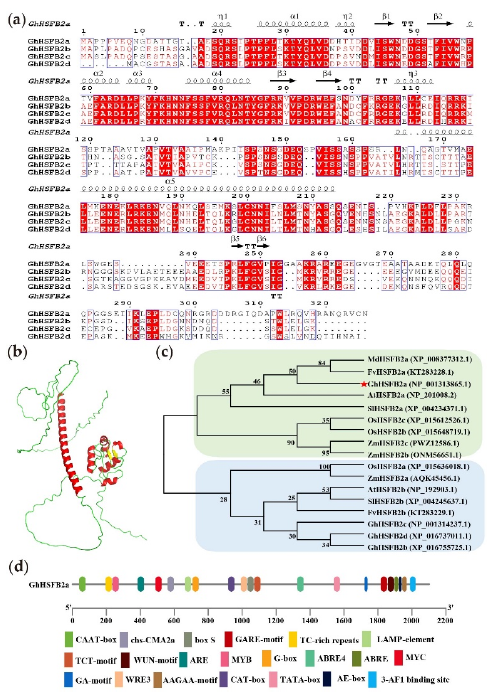Abstract:
Heat shock transcription factors (HSFs) play a critical regulatory role in many plant diseaseresistance pathways. However, the molecular mechanisms of cotton HSFs involved in resistance tothe soil-borne fungus Verticillium dahliae are limited. In our previous study, we identified numerousdifferentially expressed genes (DEGs) in the transcriptome and metabolome of V. dahliae-inoculatedArabidopsis thaliana. In this study, we identified and functionally characterized GhHSFB2a, which is aDEG belonging to HSFs and related to cotton immunity to V. dahliae. Subsequently, the phylogenetictree of the type two of the HSFB subfamily in different species was divided into two subgroups:A. thaliana and strawberry, which have the closest evolutionary relationship to cotton. We performedpromoter cis-element analysis and showed that the defense-reaction-associated cis-acting element-FCrichmotif may be involved in the plant response to V. dahliae in cotton. The expression pattern analysisof GhHSFB2a displayed that it is transcriptional in roots, stems, and leaves and significantly higherat 12 h post-inoculation (hpi). Subcellular localization of GhHSFB2a was observed, and the resultsshowed localization to the nucleus. Virus-induced gene silencing (VIGS) analysis exhibited thatGhHSFB2a silencing increased the disease index and fungal biomass and attenuated resistance againstV. dahliae. Transcriptome sequencing of wild-type and GhHSFB2a-silenced plants, followed by GeneOntology, Kyoto Encyclopedia of Genes and Genomes, protein–protein interaction, and validationof marker genes revealed that ABA, ethylene, linoleic acid, andphenylpropanoid pathways areinvolved in GhHSFB2a-mediated plant disease resistance. Ectopic overexpression of the GhHSFB2agene in Arabidopsis showed a significant increase in the disease resistance. Cumulatively, our resultssuggest that GhHSFB2a is required for the cotton immune response against V. dahliae-mediated ABA,ethylene, linoleic acid, and phenylpropanoid pathways, indicating its potential role in the moleculardesign breeding of plants.
KeyWords:
cotton; Verticillium dahliae; GhHSFB2a; RNA-seq; resistance

|